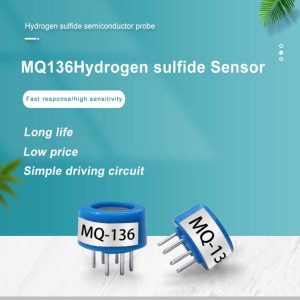Health is one of the most precious assets that we have. As the saying goes, "Health is wealth." Therefore, it is essential to take good care of our health and take preventive measures to avoid diseases. However, sometimes even after taking all precautions, people may get ill due to various reasons. Early detection of a disease is crucial for effective treatment and better outcomes. In recent years, gas sensors have emerged as a promising tool for early disease detection in the healthcare industry. In this article, we'll explore the role of gas sensors in healthcare and how they are becoming guardians of our health.

Gas sensors are devices that can detect the presence and concentration of various gases in the surrounding environment. These sensors work by measuring the interaction between a gas and a material or an analyte. They can detect different types of gases, such as toxic gases, flammable gases, and polluting gases. Gas sensors have been used in various fields, such as industrial safety, environmental monitoring, and automotive applications. However, their application in the healthcare industry is relatively new.
The human body produces various gases, such as carbon dioxide (CO2), nitrogen oxides (NOx), hydrogen sulfide (H2S), and volatile organic compounds (VOCs). These gases are produced during various metabolic processes and can provide valuable information about the health status of an individual. For example, changes in breath concentration can indicate the presence of certain diseases, such as lung cancer, asthma, and chronic obstructive pulmonary disease (COPD). Gas sensors can detect these changes in breath concentration and provide early warning signs of potential diseases.
One of the primary applications of gas sensors in healthcare is in the diagnosis and monitoring of respiratory diseases. Respiratory diseases are prevalent worldwide and account for a significant proportion of morbidity and mortality. Gas sensors can detect changes in breath concentration of CO2, NOx, and other gases, which can indicate the presence of respiratory diseases. For example, increased levels of NOx in breath concentration can indicate airway inflammation, which is a hallmark of asthma. Similarly, increased levels of H2S in breath concentration can indicate bacterial infections in the lungs. By detecting these changes in breath concentration, gas sensors can provide early warning signs of respiratory diseases, enabling early intervention and treatment.
Another area where gas sensors show potential is in the detection and monitoring of diabetes. Diabetes is a chronic metabolic disorder that affects millions of people worldwide. One of the hallmarks of diabetes is the elevated levels of acetone in breath concentration. Acetone is produced during glucose metabolism and is excreted through breath. Gas sensors can detect changes in acetone concentration in breath, providing a non-invasive and cost-effective way of monitoring blood glucose levels. This technology has the potential to revolutionize the way diabetes is managed, reducing the need for invasive blood glucose testing.
Gas sensors can also be used for the early detection of infectious diseases. Infectious diseases are caused by pathogens such as bacteria, viruses, and fungi. These pathogens produce various gases during their metabolic processes that can be detected by gas sensors. For example, acetone, ammonia, and other gases produced by bacteria can be detected by gas sensors, indicating the presence of bacterial infections. Similarly, changes in breath concentration of VOCs can indicate viral infections. By providing early detection of infectious diseases, gas sensors can help prevent the spread of disease and enable early treatment.
Gas sensors can also be used in the monitoring of drug efficacy and toxicity. Drugs produce various gases during metabolism, which can be detected by gas sensors. By monitoring changes in breath concentration of these gases, gas sensors can provide valuable information about drug efficacy and toxicity. This technology can help reduce the risk of adverse drug reactions and enable personalized medicine.

Despite the numerous benefits of gas sensors in healthcare, there are some challenges that need to be addressed. One of the major challenges is the cost of these sensors. Gas sensors can be expensive, which can limit their widespread adoption in healthcare. However, as technology advances and demand increases, the cost of gas sensors is expected to decrease, making them more accessible to a wider range of users. Another challenge is the calibration and maintenance of these sensors. Regular calibration is necessary to ensure accurate readings, and periodic maintenance is required to prevent sensor degradation. To overcome these challenges, manufacturers and service providers should offer affordable and user-friendly gas sensors, along with proper calibration and maintenance guidelines.
In conclusion, gas sensors have emerged as a promising tool for early disease detection in healthcare. By detecting changes in breath concentration of various gases, gas sensors can provide valuable information about the health status of an individual. Gas sensors can be used in the diagnosis and monitoring of respiratory diseases, diabetes, infectious diseases, and drug efficacy and toxicity. Although there are challenges to overcome, the potential benefits of utilizing gas sensors in healthcare outweigh the drawbacks. Gas sensors are becoming guardians of our health, providing us with early warning signs of potential diseases and enabling early intervention and treatment.
 : +86 155 8830 2704
: +86 155 8830 2704 : jxdziot@gmail.com
: jxdziot@gmail.com
